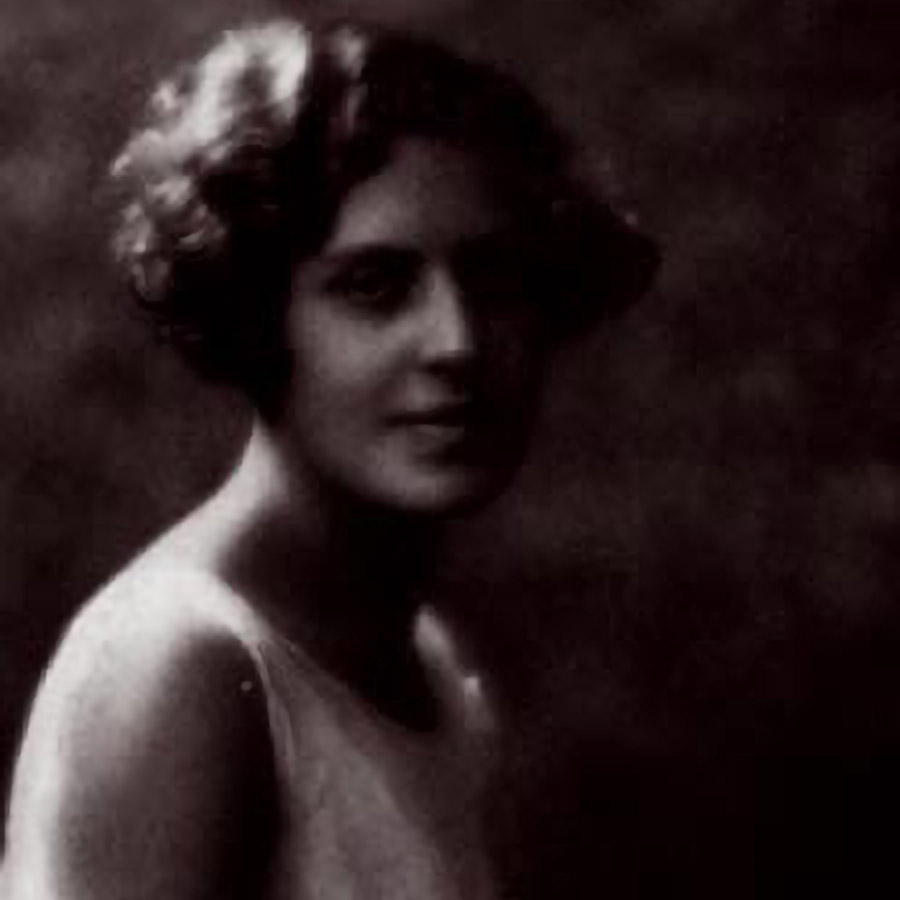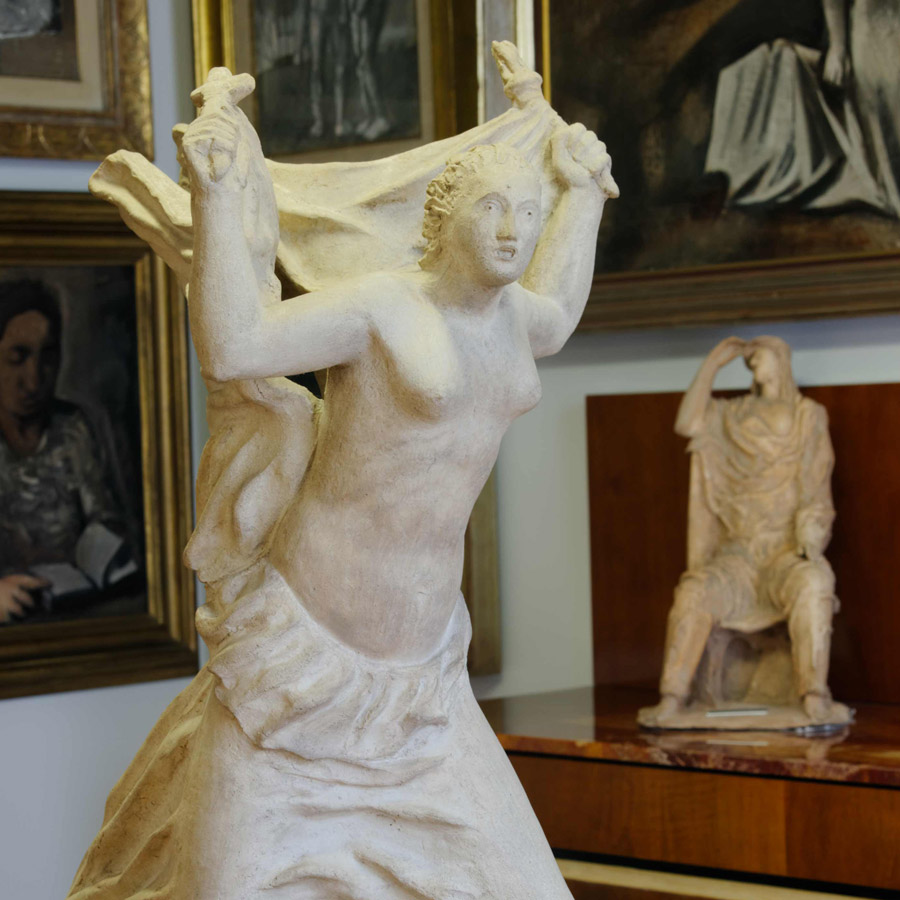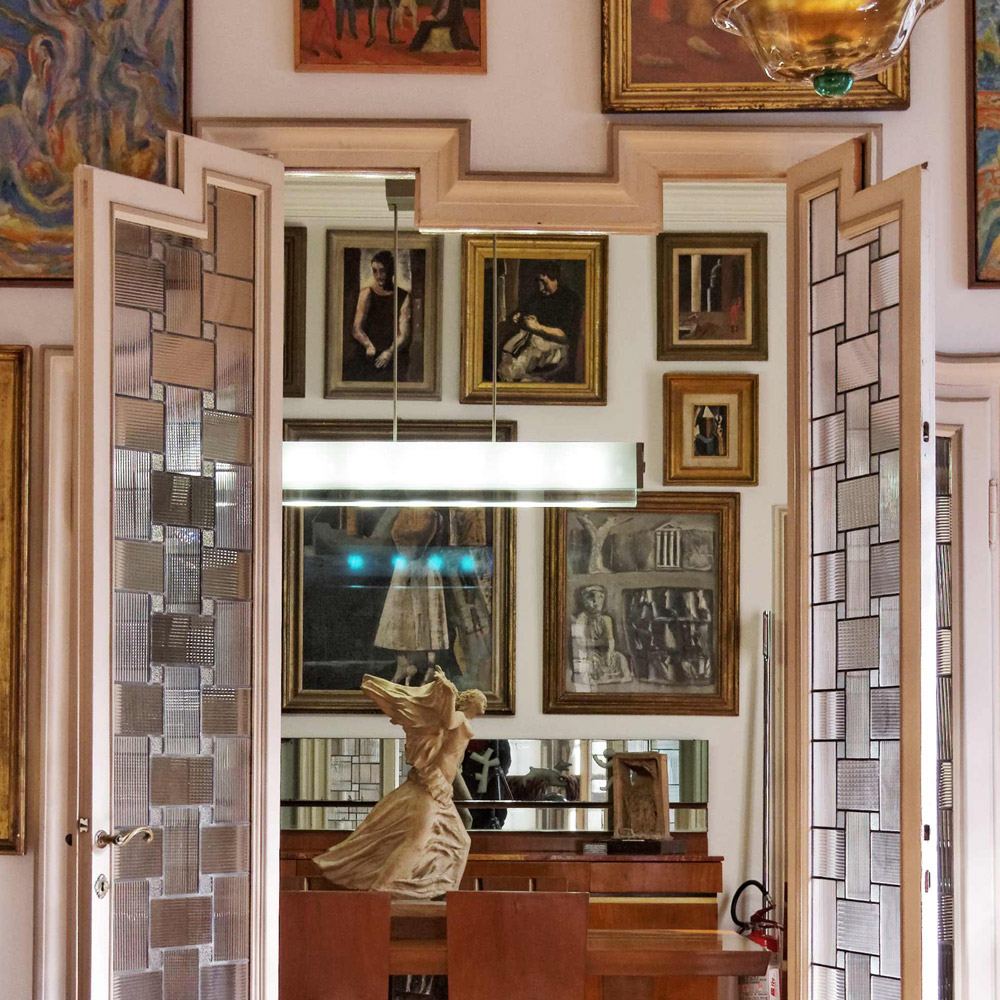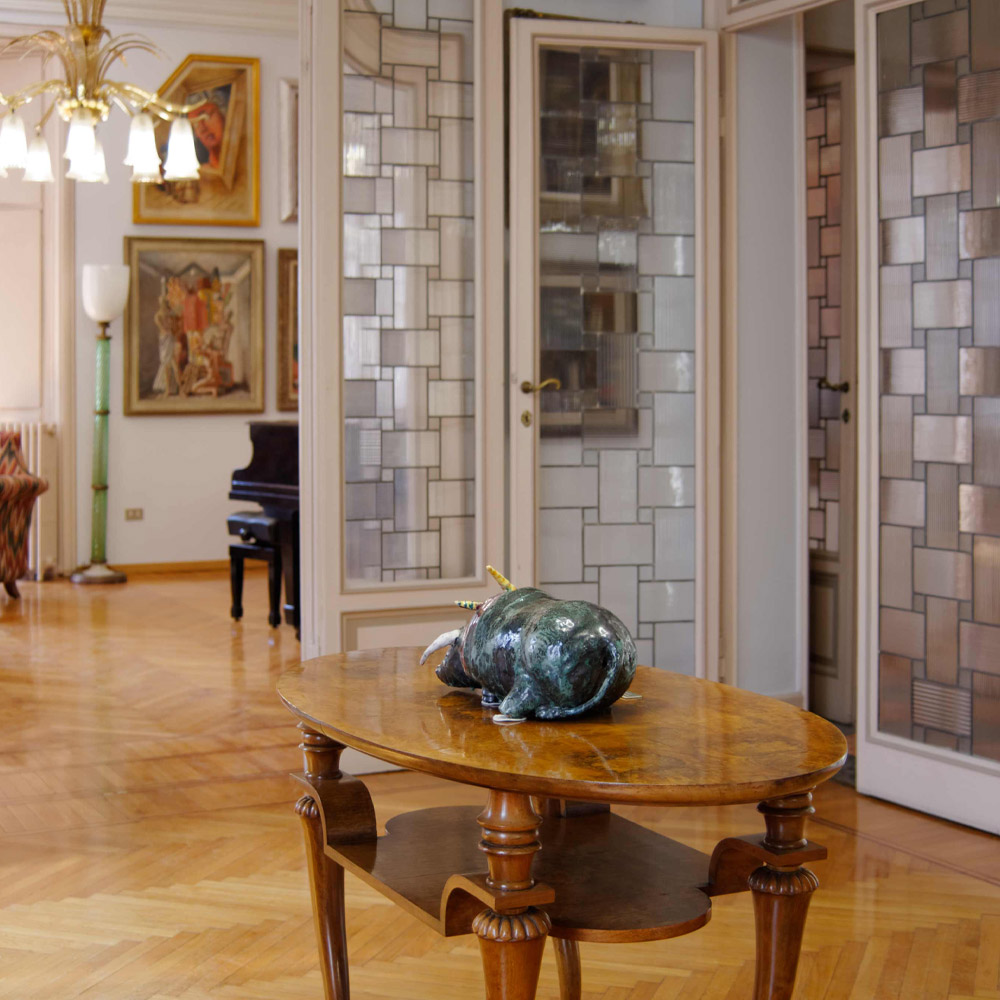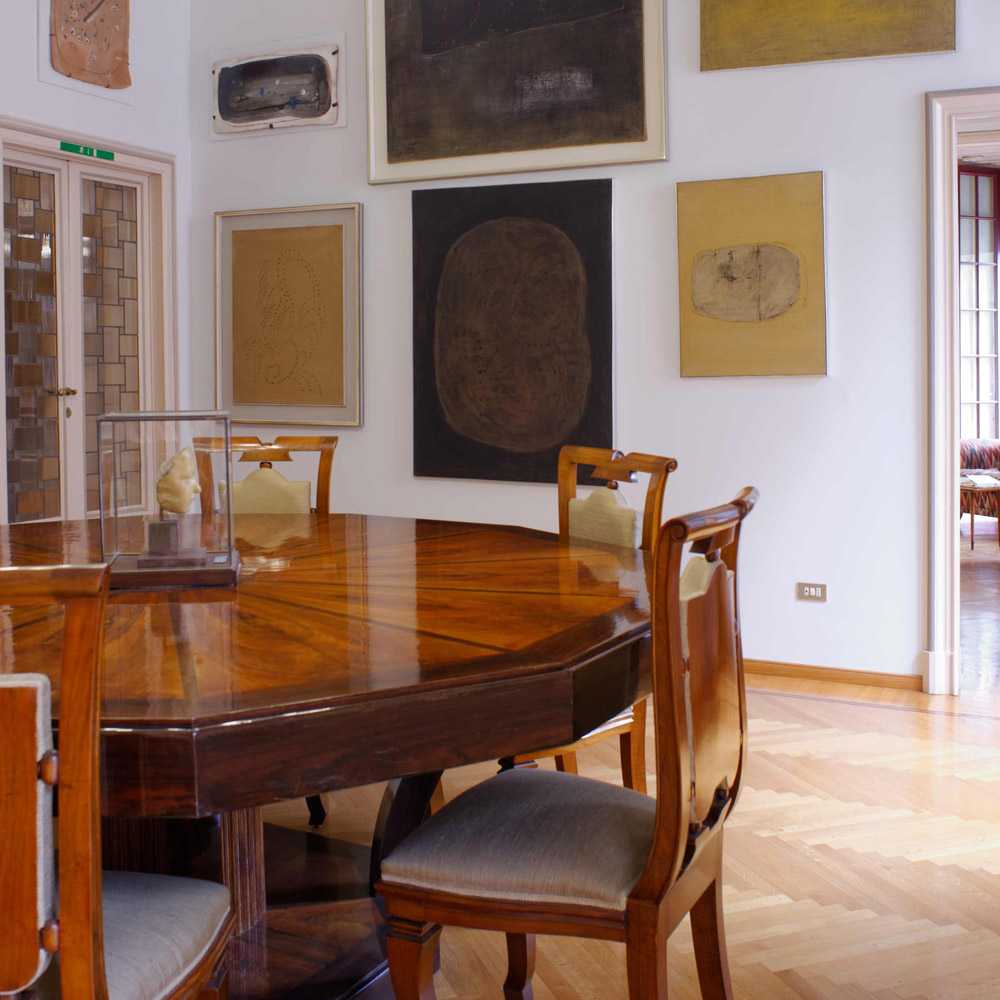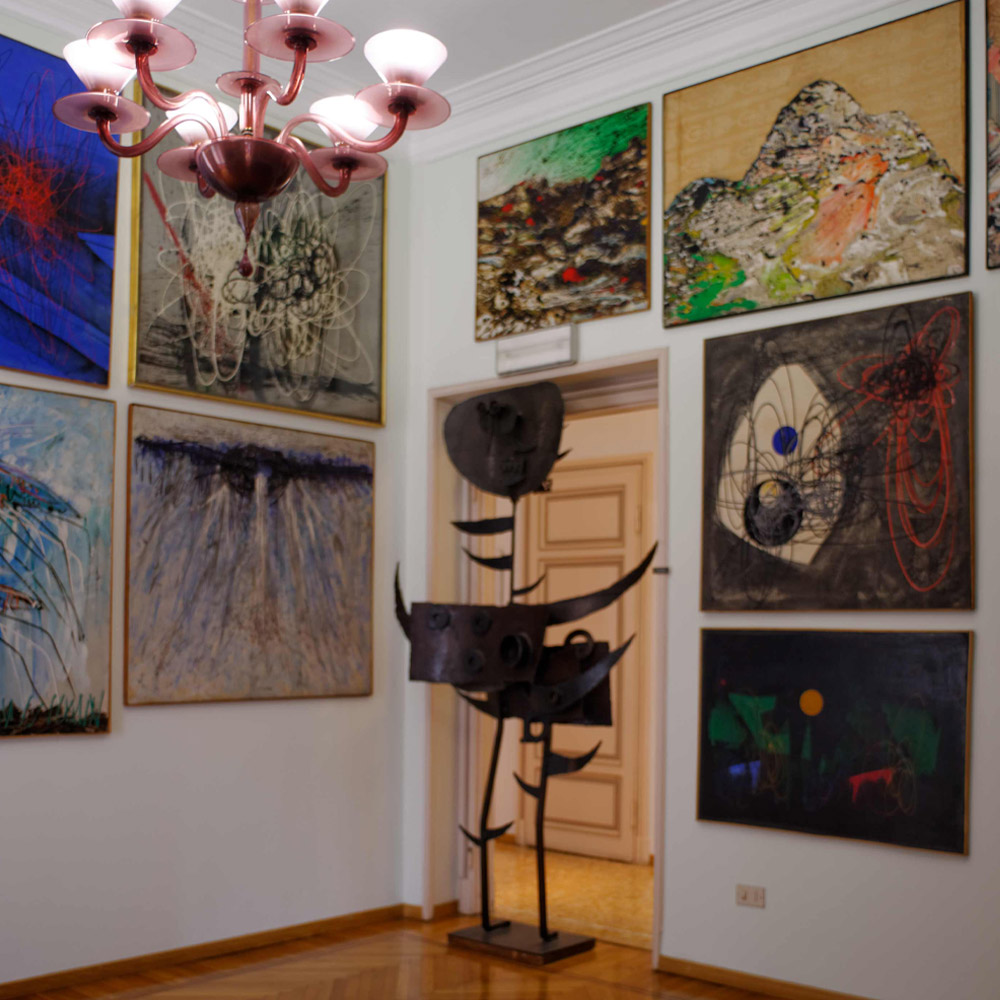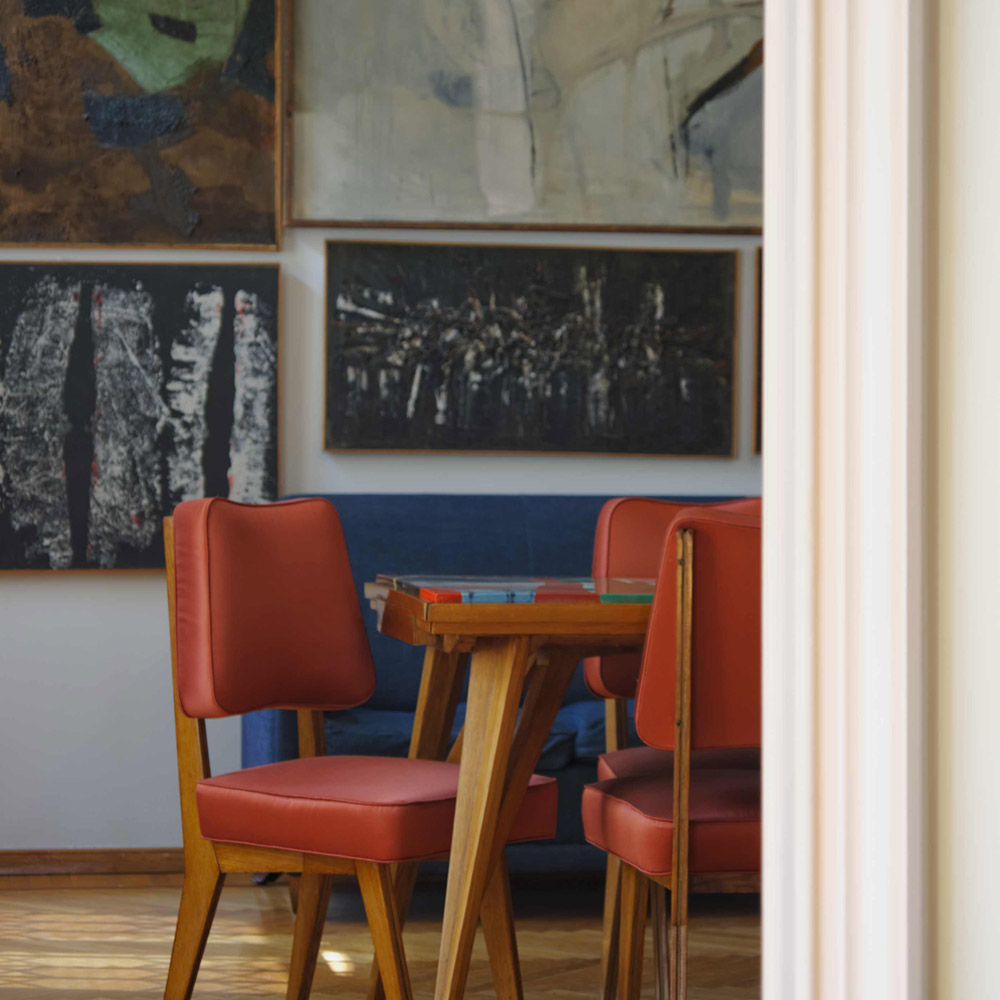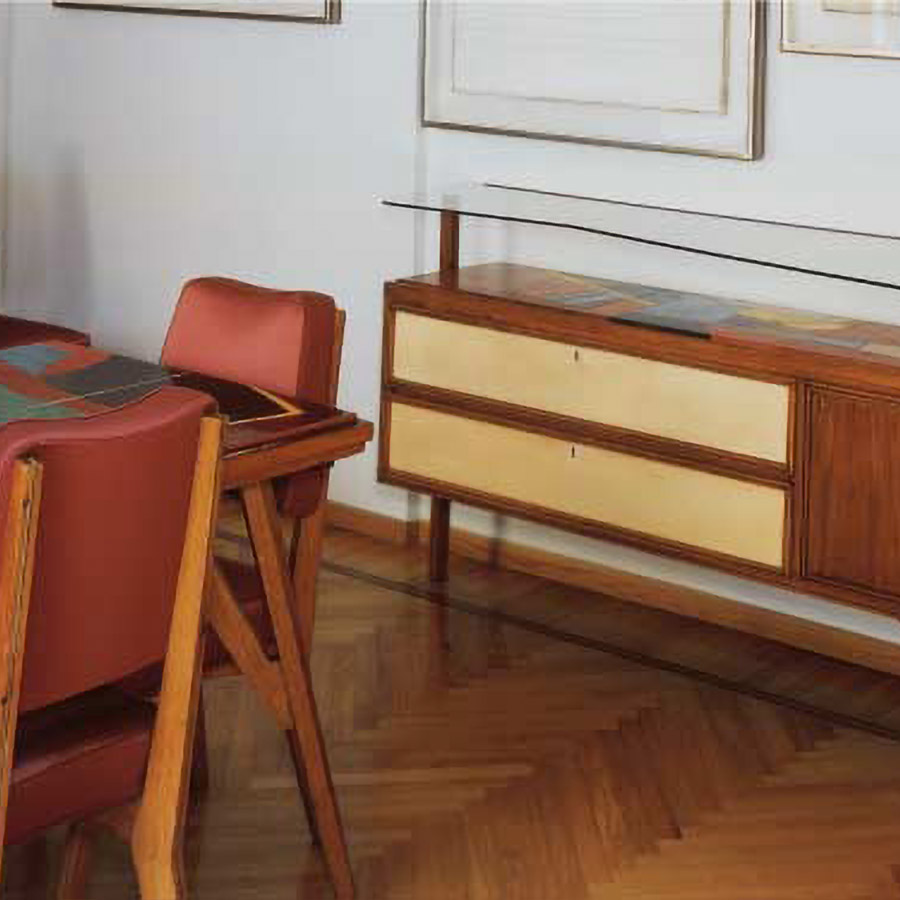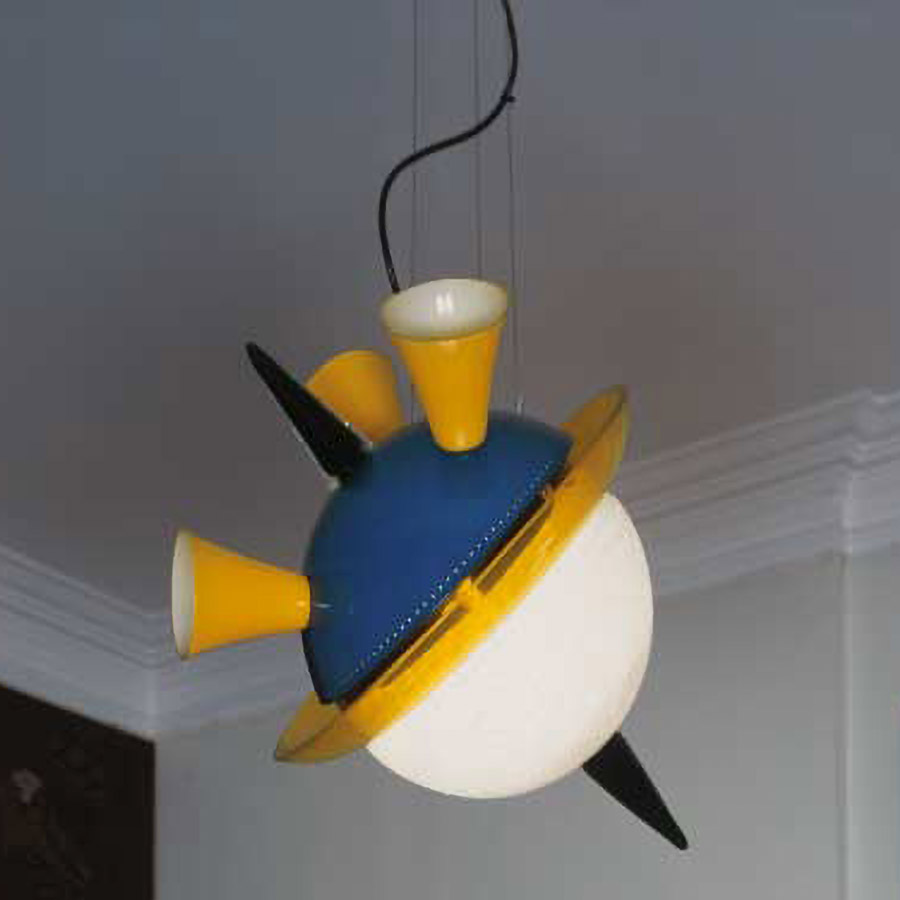Informations
Boschi Di Stefano Museum-House
via Giorgio Jan 15, Milano
Phone: +39 02 88 46 36 14
(monday-friday from 9:00 am to 4:00 pm)
Phone: +39 02 88 46 47 48
(saturday-sunday from 10:00 am to 5:00 pm)
Opening hours
10:00 am 5:30 pm from Tuesday to Sunday
(last entry 5:00 pm)
closed on 1st January | 1st May | 25th December
Admittance free of charge
Booking is recommended, but not mandatory, via the Vivaticket website
Groups of up to 20 people can access the Museum.
Larger groups will be asked to divide within the tour.
How to find us
MM1 Lima, Tram 33, Bus 60
The Museum Home
The Boschi Di Stefano Museum Home
At number 15, Via Giorgio Jan, has been open to the public since February 2003. In these premises – once inhabited by the married couple Antonio Boschi (1896-1988) and Marieda Di Stefano (1901-1968) – about three-hundred pieces are exhibited selected from over two thousand works, donated to the City of Milan in 1974.
The collection – which comprises paintings, sculptures and drawings – is an extraordinary testimony to the history of Twentieth Century Italian art from the first decade to the end of the Sixties.
The Museum Home is located in a small block built in the Nineteen Thirties by Piero Portaluppi. The interiors, restored by the City of Milan, were fitted and furnished by the Boschi Di Stefano Foundation, established in 1998.
The works have been selected on the basis of their quality, and arranged in chronological order in eleven exhibition areas, under the supervision of Maria Teresa Fiorio, ex Director of the Civiche Raccolte d’Arte of Milan. The furnishings of these spaces – such as the dining room designed by Mario Sironi in 1936 – were chosen for their historical relevance.

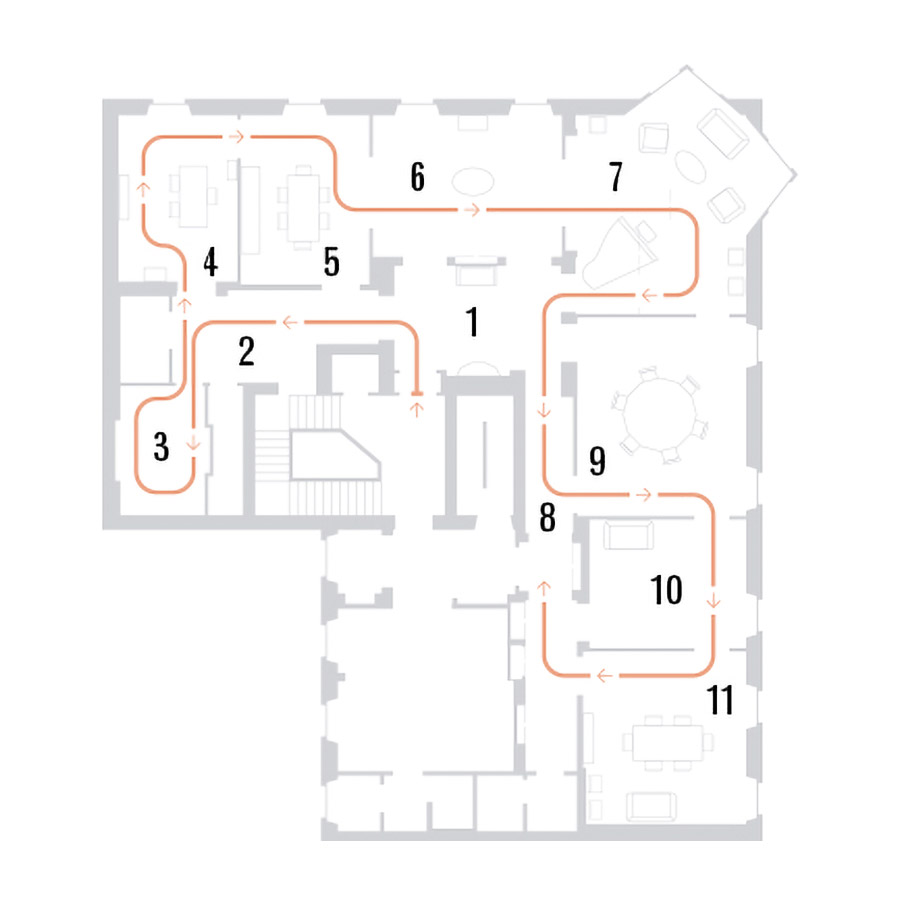
The collectors
Married life for Antonio Boschi and Marieda Di Stefano began in 1927
They had met the previous year, while on holiday in Val Sesia, and had immediately decided to get married, but the social conventions of the time imposed a period of engagement. Born in Novara in 1896, Boschi was a young engineer only recently employed by Pirelli, where he was to enjoy a brilliant career, as testified by numerous and important patents including, to give just one example, the GIUBO (Boschi Joint). Before that, he had been an airship crew member during WW1, and shortly after graduating he had worked for two years in Budapest in the railway sector.
Marieda, born in Milan in 1901, already breathed a passion for art in her family, her father Francesco being a collector of works mainly from Sarfatti’s 20th century. Attracted by the material and colouristic possibilities offered by ceramics, Marieda took lessons in sculptor Luigi Amigoni’s studio after her regular studies. Over the years she exhibited, with recognition, in many exhibitions, not only national. In 1962 she founded the Ceramic School, which bears her name, located in the same building in via Jan 15 and directed until 2011 by Migno Amigoni, daughter of the master and Marieda’s personal friend since the 1930s.
As Boschi himself stated, the collection rightfully bears the names of both spouses: “it is not a tribute paid to the memory of my partner” – who died in 1968 – “but corresponds to reality. It is a common work in the total sense: in the material sense with the implications of decisions, of application, of financial sacrifices and consequent renunciations in other fields; and in the artistic sense as a concordance of tastes, of directions, of choices’.
A strong civic and social sense drove Antonio Boschi to make a first donation to the City of Milan, which took place in 1974. This will be followed by a second one, made at his death in 1988, including the last solitary purchases, mostly made through the Galleria delle Ore.
The works on show
Boschi Di Stefano Foundation
Antonio and Marieda Boschi Di Stefano collected over two thousand works. About three hundred of these have been selected for their quality and distributed in chronological order in the eleven exhibition areas of the Boschi Di Stefano Museum-Home by the curator Maria Teresa Fiorio, ex Director of the Civiche Raccolte d’Arte of Milan.
There are portraits of Boschi and Di Stefano at the entrance, with pottery by Marieda herself. From there, a corridor featuring canvases by Severini and Boccioni takes visitors to the “Twentieth Century Italian Room”, with works by Funi, Marussig, Tozzi, Carrà and Casorati. The “Sironi Room”, dedicated to that artist, also contains sculptures by Arturo Martini. The next room contains the Gruppo di Corrente, with seven works by Morandi and six by De Pisis.
The Chiaristi painters are grouped in a small corridor, leading to the “Italiens de Paris room”: Campigli, Paresce; Savinio’s L’Annunciazione (1932); and de Chirico, with La scuola dei gladiatori (1928). The “Fontana Room” offers an exquisite ensemble of twenty works, while the last two rooms are reserved for the Picassian post-cubists, the Spazialisti, the Nucleari and the informal painters, including Piero Manzoni, with his famous Achrome paintings.
The furnishings
In his last will and testament, Antonio Boschi
Stipulated that the via Jan apartment, where he and Marieda had lived for so long, be opened to the public as a museum-home, hosting a selection of works from their collection.
For reasons of security and conservation it was impossible to preserve intact what Ornella Selvafolta described as “an inhabited museum” whose “spaces, outfitting and furnishings seem almost overwhelmed by the works of art”. Only a few pieces were retained – among these a small table designed by Piero Portaluppi, and the Bechstein piano – consequently the Boschi Di Stefano Foundation arranged to purchase the necessary replacement furniture, chosen to harmonise with the period of the building and with the works displayed.
The ex guest room now houses a whole set of furniture for a study, produced by the firm Ducrot of Palermo around 1930, while the monograph room dedicated to Mario Sironi features a dining room designed by the same artist, and presented in 1936 at the VI Triennale in Milan. Equally worthy of note is the dining room furniture designed by Gino Levi Montalcini in 1949-50, and the “Agena” ceiling light of the Galassia collection by Alessandro Mendini, produced by Venini in 1993, installed in the ex master bedroom of the Boschi Di Stefanos.



The Museum of the Twentieth Century
Other works belonging to the Boschi Di Stefano Collection are displayed
In the Museum of the Twentieth Century, which opened in 2010. Also a model of a part of the home is on display in a small room near the entrance to the museum. The interior of the room is by Alessandro and Francesco Mendini’s Atelier with details based on the communal parts of the home at 15 via Jan, designed by Piero Portaluppi (including a replica of the lamp in the hallway). Details of the original apartment of the collectors, on the other hand, have been reconstructed (by Clara Rota) inside the model.
The room also contains a screen which gives information on other places in Milan where Twentieth Century Italian paintings and architecture can be seen.



